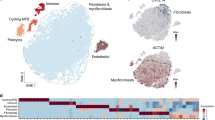Abstract
A total of 85 spontaneous rat fibrohistiocytic tumours were evaluated histologically and assessed for the presence or absence of metastases. The overall incidence in controls from 2-year carcinogenicity studies was 2.7%. The tumours occurred principally in the subcutaneous and deep soft tissues, and generally appeared after 18 months of age. Four histological types were recognized: histiocytic (17%), pleomorphic (33%), cellular (17%) and very fibrous (33%). Histiocytic tumours were highly malignant, and most produced metastases. Pleomorphic and cellular neoplasms occasionally produced metastases and must be regarded as potentially malignant. Very fibrous lesions were essentially benign. The close resemblance, both histologically and biologically, between rat and human fibrohistiocytic neoplasms supports the use of the fibrohistiocytic concept in laboratory-animal pathology. Study of these rat tumours may provide insight into the development of human fibrohistiocytic neoplasms.
This is a preview of subscription content, access via your institution
Access options
Subscribe to this journal
Receive 24 print issues and online access
$259.00 per year
only $10.79 per issue
Buy this article
- Purchase on Springer Link
- Instant access to full article PDF
Prices may be subject to local taxes which are calculated during checkout
Similar content being viewed by others
Rights and permissions
About this article
Cite this article
Greaves, P., Faccini, J. Spontaneous fibrous histiocytic neoplasms in rats. Br J Cancer 43, 402–411 (1981). https://doi.org/10.1038/bjc.1981.61
Issue Date:
DOI: https://doi.org/10.1038/bjc.1981.61
This article is cited by
-
Histological demonstration of wheat germ lectin binding sites in the liver of normal and ANIT treated rats
Archives of Toxicology (1986)
-
Carcinogenicity of N-alkyl-N-(acetoxymethyl)nitrosamines after subcutaneous injections in F-344 rats
Journal of Cancer Research and Clinical Oncology (1982)



